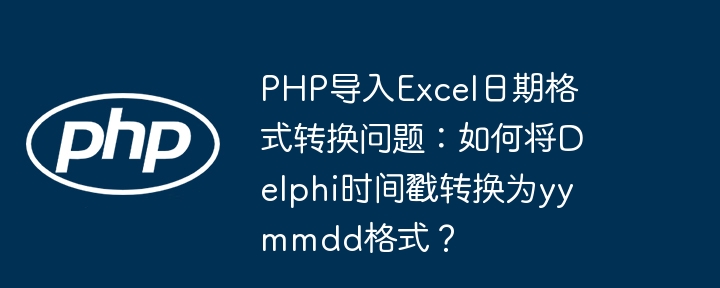
如何使用Hyperf框架进行权限控制
引言:
在开发一个应用程序时,往往需要实现权限控制功能,以不同的角色给予用户不同的权限。Hyperf框架是一个高性能的php微服务框架,提供了许多强大的功能和扩展,其中包括灵活的权限控制。在本文中,我们将探讨如何使用Hyperf框架实现权限控制,并提供具体的代码示例。
一、创建权限表
首先,我们需要创建一个权限表,用于存储各种权限信息。可以通过Hyperf的数据迁移功能来创建数据库表。在终端中执行以下命令来生成迁移文件:
php bin/hyperf.php gen:migration create_permissions_table
然后在生成的迁移文件中添加以下内容:
<?php use HyperfDatabaseSchemaSchema; use HyperfDatabaseSchemaBlueprint; use HyperfDatabaseMigrationsMigration; use HyperfDbConnectionDb; class CreatetPermissionsTable extends Migration { /** * Run the migrations. */ public function up(): void { $tableName = 'permissions'; $exists = Db::table('information_schema.TABLES') ->where('TABLE_SCHEMA', config('databases.default.dbname')) ->where('TABLE_NAME', $tableName) ->first(); if (!$exists) { Schema::create($tableName, function (Blueprint $table) { $table->bigIncrements('id'); $table->string('name')->unique()->comment('权限名称'); $table->string('guard_name')->default('web')->comment('守卫名称'); $table->timestamps(); }); } } /** * Reverse the migrations. */ public function down(): void { Schema::dropIfExists('permissions'); } }
接下来,我们需要在项目的主配置文件config/autoload/permissions.php中添加以下内容:
<?php return [ 'default' => [ 'guard_name' => 'web', 'permissions' => [ // 在这里添加你的权限 'create_post', 'edit_post', 'delete_post', // ... ], ], ];
然后在命令行中运行以下命令执行数据库迁移:
php bin/hyperf.php migrate
二、定义用户角色模型
在Hyperf框架中,我们需要定义一个用户模型,该模型用于管理用户的角色和权限。我们可以通过继承HyperfDatabaseModelModel类来创建一个用户模型。在终端中执行以下命令来生成用户模型:
php bin/hyperf.php gen:model User
然后在生成的用户模型文件中添加以下代码:
namespace AppModel; use HyperfDbConnectionModelModel; use HyperfUtilsApplicationContext; class User extends Model { protected $guarded = []; public function roles() { return $this->belongsToMany(Role::class); } public function hasPermission($permission) { foreach ($this->roles as $role) { if ($role->hasPermission($permission)) { return true; } } return false; } public function givePermission($permission) { $permissionModel = Permission::where('name', $permission)->first(); if (!$permissionModel) { throw new Exception("Permission {$permission} does not exist."); } $this->permissions()->sync($permissionModel, false); } public function revokePermission($permission) { $permissionModel = Permission::where('name', $permission)->first(); if (!$permissionModel) { throw new Exception("Permission {$permission} does not exist."); } $this->permissions()->detach($permissionModel); } public function permissions() { return $this->belongsToMany(Permission::class, 'user_permissions'); } }
三、定义角色模型
在Hyperf框架中,我们也需要定义一个角色模型,该模型用于管理角色和权限。同样,我们可以通过继承HyperfDatabaseModelModel类来创建一个角色模型。在终端中执行以下命令来生成角色模型:
php bin/hyperf.php gen:model Role
然后在生成的角色模型文件中添加以下代码:
namespace AppModel; use HyperfDbConnectionModelModel; class Role extends Model { protected $guarded = []; public function users() { return $this->belongsToMany(User::class); } public function permissions() { return $this->belongsToMany(Permission::class); } public function hasPermission($permission) { return $this->permissions->contains('name', $permission); } public function givePermission($permission) { $permissionModel = Permission::where('name', $permission)->first(); if (!$permissionModel) { throw new Exception("Permission {$permission} does not exist."); } $this->permissions()->sync($permissionModel, false); } public function revokePermission($permission) { $permissionModel = Permission::where('name', $permission)->first(); if (!$permissionModel) { throw new Exception("Permission {$permission} does not exist."); } $this->permissions()->detach($permissionModel); } }
四、定义权限模型
在Hyperf框架中,我们还需要定义一个权限模型,该模型用于管理权限信息。同样地,我们可以通过继承HyperfDatabaseModelModel类来创建一个权限模型。在终端中执行以下命令来生成权限模型:
php bin/hyperf.php gen:model Permission
然后在生成的权限模型文件中添加以下代码:
namespace AppModel; use HyperfDbConnectionModelModel; class Permission extends Model { protected $guarded = []; public function roles() { return $this->belongsToMany(Role::class); } }
五、定义权限中间件
接下来,我们需要创建一个权限中间件,用于检查用户是否有足够的权限访问某个路由。在终端中执行以下命令来生成中间件:
php bin/hyperf.php gen:middleware PermissionMiddleware
然后在生成的中间件文件中添加以下代码:
namespace AppMiddleware; use HyperfHttpMessageStreamSwooleStream; use HyperfHttpServerContractRequestInterface; use HyperfUtilsContext; use PsrContainerContainerInterface; use PsrHttpMessageResponseInterface; use PsrHttpServerMiddlewareInterface; use PsrHttpServerRequestHandlerInterface; class PermissionMiddleware implements MiddlewareInterface { protected $container; protected $request; public function __construct(ContainerInterface $container, RequestInterface $request) { $this->container = $container; $this->request = $request; } public function process($request, RequestHandlerInterface $handler): ResponseInterface { $user = $this->request->getAttribute('user'); $permissions = $this->request->route->permission; if ($user && $user->hasPermission($permissions)) { return $handler->handle($request); } return $this->response(403, 'Forbidden'); } protected function response($code, $message) { $data = [ 'code' => $code, 'message' => $message, ]; return Context::get(ResponseInterface::class)->withBody(new SwooleStream(json_encode($data))); } }
六、使用权限中间件
在路由定义中,我们可以通过使用->middleware(‘permission:xxx’)来给路由设置对应的权限中间件。在终端中执行以下命令来生成路由文件:
php bin/hyperf.php gen:controller PermissionController
然后在生成的路由文件中添加以下代码:
namespace AppController; use AppMiddlewarePermissionMiddleware; use HyperfHttpServerAnnotationController; use HyperfHttpServerAnnotationMiddleware; use HyperfHttpServerAnnotationRequestMapping; /** * @Controller * @Middleware(PermissionMiddleware::class) */ class PermissionController { /** * @RequestMapping(path="/permission", methods="get") * @Middleware("permission:create_post") */ public function createPost() { // 处理创建文章的逻辑 } /** * @RequestMapping(path="/permission", methods="get") * @Middleware("permission:edit_post") */ public function editPost() { // 处理编辑文章的逻辑 } /** * @RequestMapping(path="/permission", methods="get") * @Middleware("permission:delete_post") */ public function deletePost() { // 处理删除文章的逻辑 } }
七、使用示例
在需要进行权限控制的地方,我们可以通过以下方式来检查用户是否拥有足够的权限:
$user = User::find(1); if ($user->hasPermission('edit_post')) { // 给用户权限来编辑文章 } else { // 权限不足 }
八、总结
本文介绍了如何使用Hyperf框架进行权限控制的详细步骤,并提供了具体的代码示例。通过使用Hyperf框架提供的权限管理功能,我们可以轻松地为我们的应用程序实现灵活的权限控制功能。希望本文对您有所帮助,谢谢阅读!


















